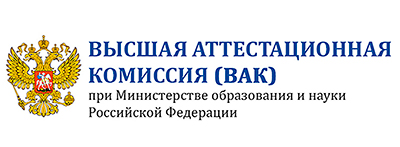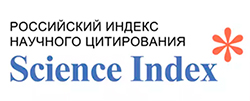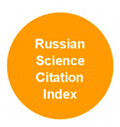How robotics and labor-saving technologies impact population change: trends and scenarios
Abstract
Robots and other labor-saving technologies such as numerical control machine tools, additive technologies, artificial intelligence and large production complexes in mining are replacing human beings in manufacturing. The shrinking labor market will influence fertility, health care financing (and thus mortality), as well as both internal and international migration, especially in developing countries.
The departure of women from the labor market may lead to an increase in fertility, especially if the state introduces a guaranteed income for each of its members. At the same time, unemployment may lead to a significant decrease in fertility and in the desire to have children.
Artificial intelligence in medicine may improve the quality of diagnostics and reduce the costs of medical services, thus leading to lower mortality, but decreasing tax revenue and personal income may slow down rising life expectancy or even bring it to a halt.
At the same time, labor-saving technologies will solve the problem of labor shortages resulting from an aging population.
Today’s international migration patterns may change dramatically, since labor immigrants will no longer be needed in developed economies. The modernization model for developing countries which took shape in the 20th century, consisting of industrialization and urbanization, may disappear as a result of a shrinking labor market in modern industry and services. Urbanization alone, with no industrialization, results in political disturbance and even bloodshed, as shown by the experience of developing states in the years 1960-2005.
Both positive and negative scenarios of population change may result from the development of labor-saving technologies. The result will mainly depend on the management of social and demographic processes.
Downloads
References
Akimov A.V. (2016a). Robototekhnika: sostoyanie i perspektivy razvitiya v mire i Rossii [Robotics: the present state and perspectives in the world and in Russia] // Poisk, al'ternativy, vybor [Search, alternatives, choice]. 2: 114-125.
Akimov A.V. (2016b). Demograficheskiy vzryv, starenie naseleniya i trudosberegayushchie tekhnologii: vzaimodeystvie v XXI v. [Demographic explosion, population aging and labor-saving technologies: interaction in the XXI century] Mirovaya ekonomika i mezhdunarodnye otnosheniya [World economy and international relations]. 4. 60: 50-60.
Arab-Ogly Je.A. (1986). Obozrimoe budushchee. Sotsial'nye posledstviya NTR: god 2000 [Observable future. Social aftermath of scientific and technological revolution]. Moscow: Mysl'. 141 p.
Derjugina I.V. (2015). Sel'skoe khozyaystvo mira: proshloe i budushchee 1980-2010-2050 [Agriculture of the world: the past and future 1980-2010-2050]. Moscow: Izdatel'stvo «Pero». 128 p.
Ford M. (2016). Roboty nastupayut. Razvitie tekhnologiy i budushchee bez raboty [Robots come. Technological development and a future without jobs]. Moscow: Al'pina non-fikshn. 430 p.
Friedrichs G., A. Schaff, eds. (1982). Microelectronics and society. For better or for worse. Oxford: Pergamon Press. 353 p.
Korotayev A.V., YU.V. Bozhevol'nov, L.Ye. Grinin, YU.V. Zin'kina, S.V. Kobzeva (2011). K prognozirovaniyu politicheskoy nestabil'nosti v stranakh Afriki na period do 2050 g. [Towards the prediction of political instability in African countries for the period to 2050] // Proekty i riski budushchego. Kontseptsii, modeli, instrumenty, prognozy [Projects and risks of the future. Concepts, models, tools, forecasts]. Moscow: KRASAND: 357-379.
Leont'ev V. (1990). Ekonomicheskie esse. Teorii, issledovaniya, fakty i politika [Economic essays. theories, studies, facts , and politics]. Moscow: Izdatel'stvo politicheskoy literatury.415 p.
OICA (2015). Production statistics 2015. URL: http://www.oica.net/category/production-statistics/2015-statistics/ (accessed 15.02.2017).
Shherbakova E. (2016). Po otsenke OON, v 2015 godu naschityvalos' 244 milliona mezhdunarodnykh migrantov [According the UN, there were 244 million international migrants in the world in 2015] // Demoskop Weekly [Demoskope Weekly]. 703 – 704. URL: http://demoscope.ru/weekly/2016/0703/barom01.php (accessed: 12.02.2017).
Shvab K. (2017). Chetvertaya promyshlennaya revolyutsiya [The fourth industrial revolution]. Moscow: Izdatel'stvo «E». 208 p.
Spens M. (2013). Sleduyushchaya konvergentsiya: budushchee ekonomicheskogo rosta v mire, zhivushchem na raznykh skorostyakh [The next convergence: the future of economic growth in the different speed world]. Moscow: Izdatel'stvo instituta Gaydara. 336 p.
Vishnevskij A.G., R.V. Dmitriev (2016). Global'nye demograficheskie protsessy v KhKh – nachale KhKhI vekov [Global Demographic Processes in the XX and in the Beginning of the XXI Century] // Geografija mirovogo razvitija. Vyp. 3. Sb. nauchnyh trudov [Geography of world development . Is. 3. Research papers] / L.M. Sincerov, ed. Moscow: Tovarishchestvo nauchnykh izdaniy KMK: 197-229.
WHO (2017). Health expenditure ratios, by country, 1995-2014. New York: United Nations. URL: http://apps.who.int/gho/data/view.main.HEALTHEXPRATIONOR?lang=en (accessed: 23.03.2017).
WPP (2015) World population prospects. The 2015 revision. Key findings & advance tables. New York: UN. 66 p.
























